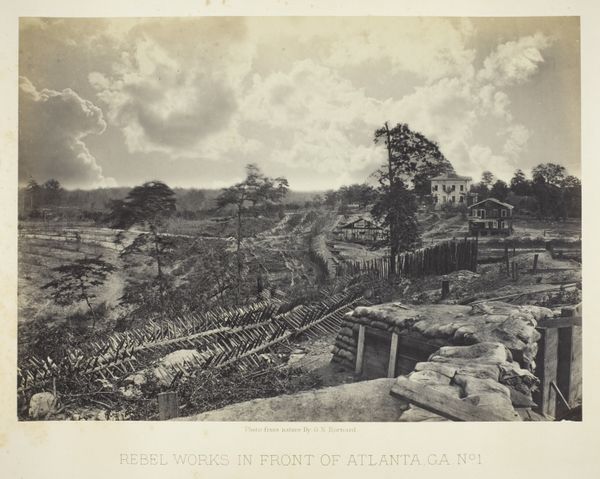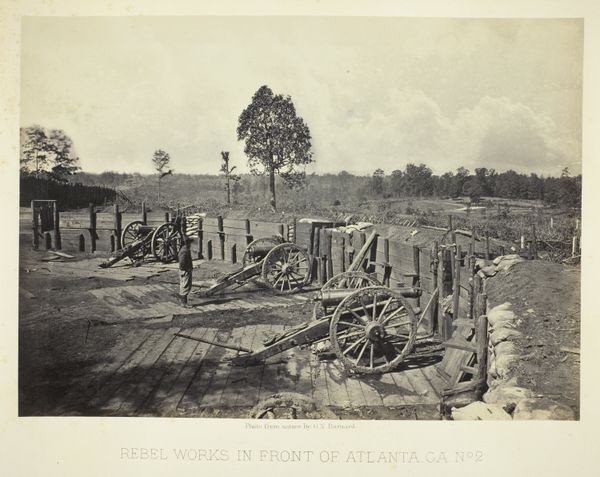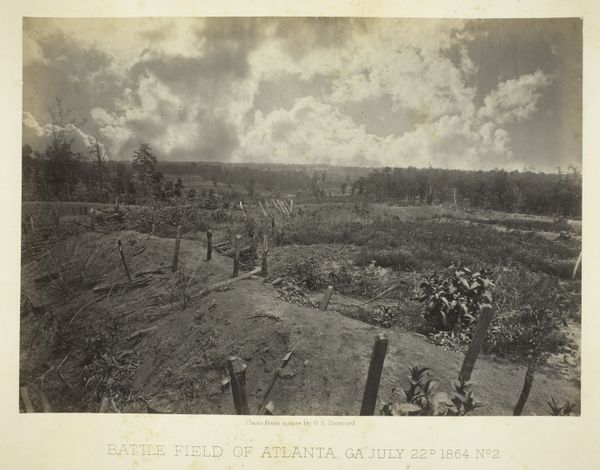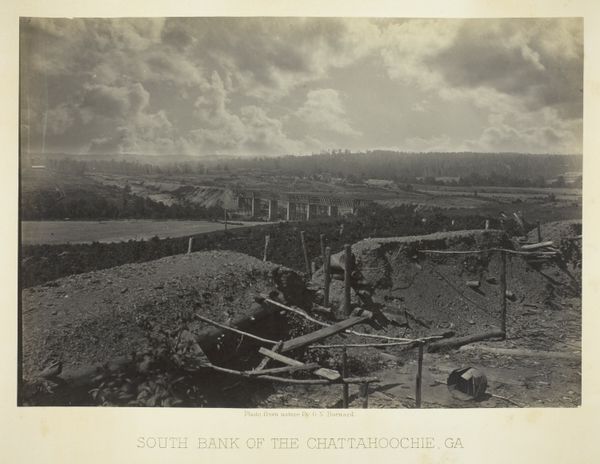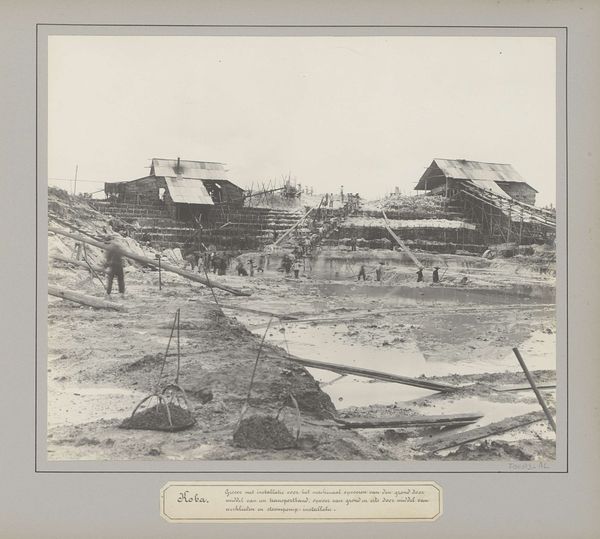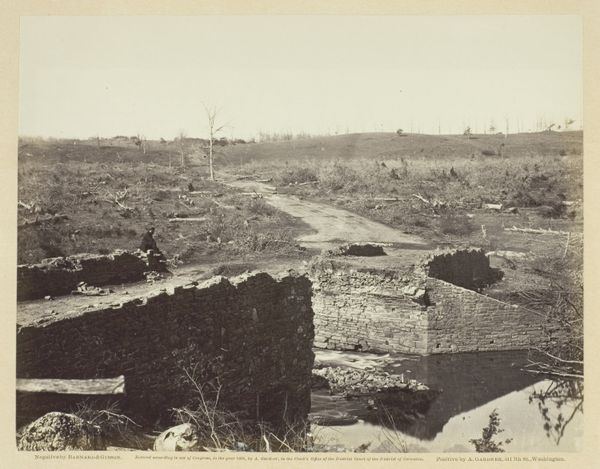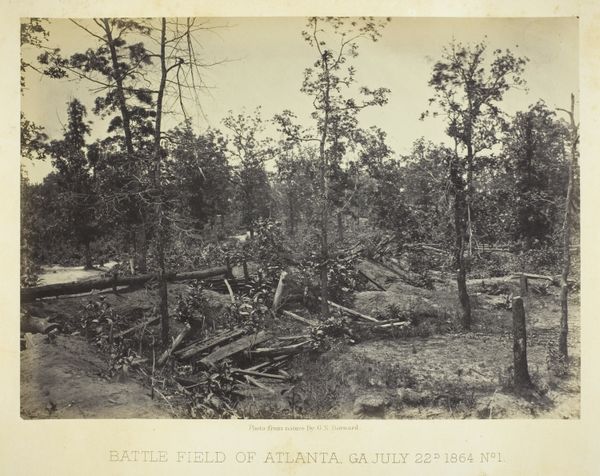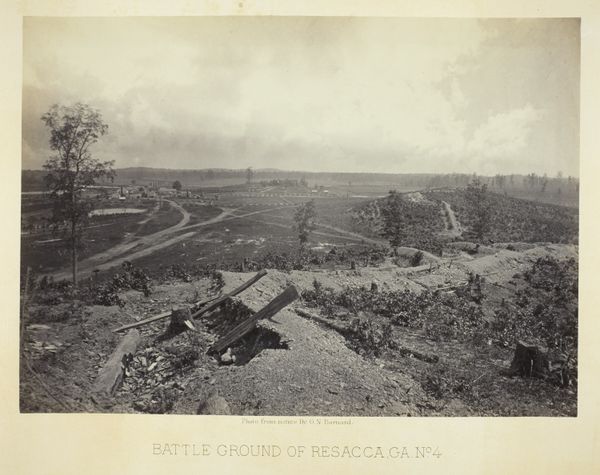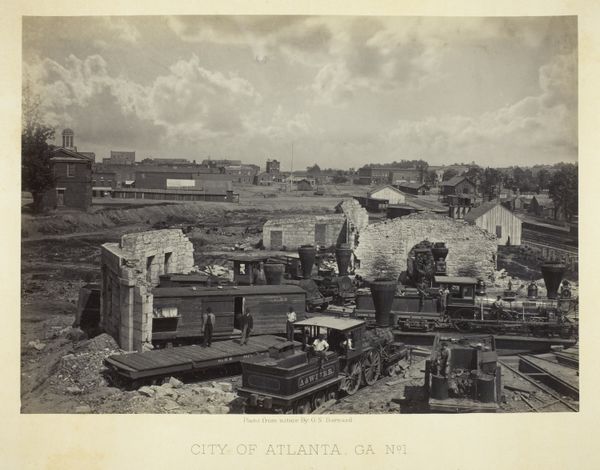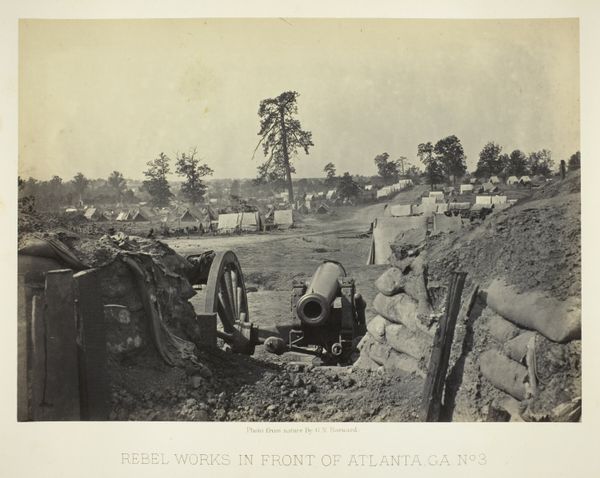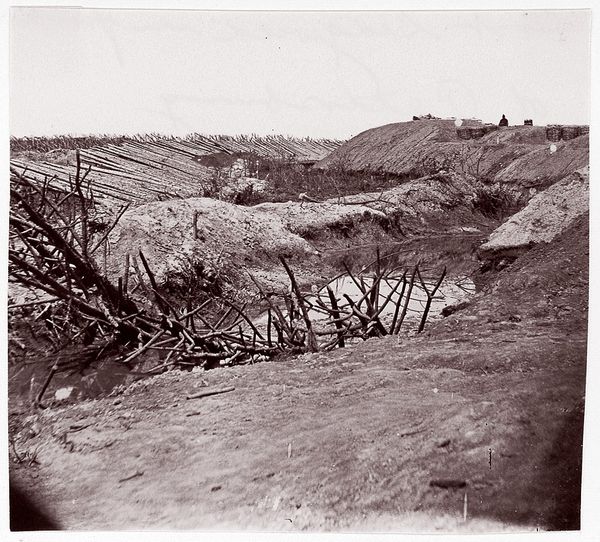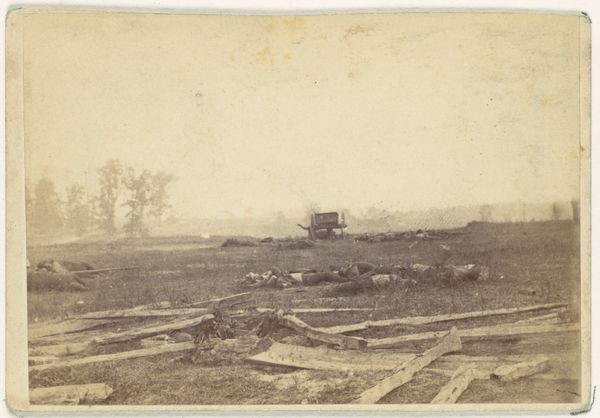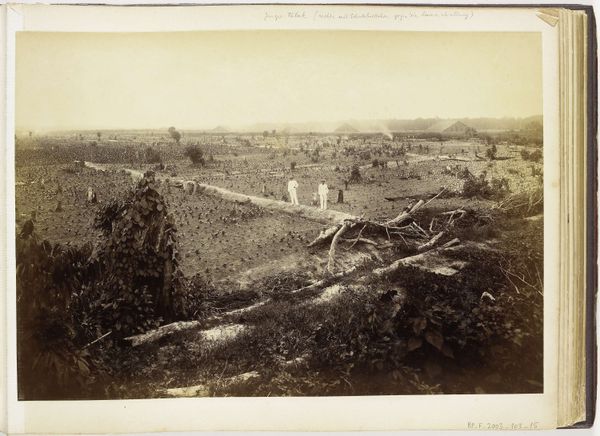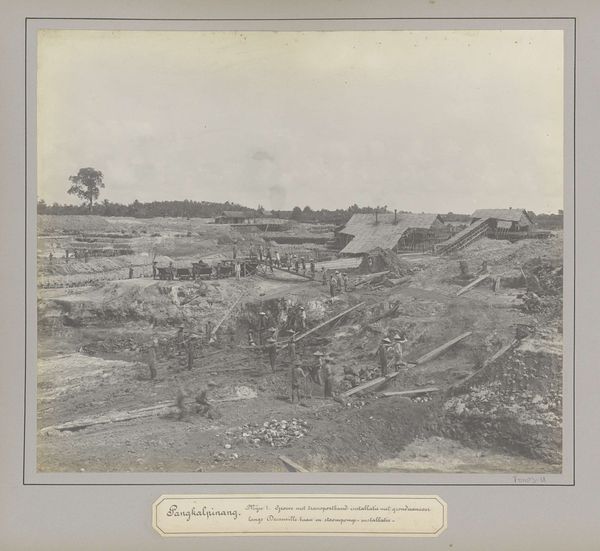
print, photography, site-specific, gelatin-silver-print
#
16_19th-century
# print
#
war
#
landscape
#
photography
#
historical photography
#
site-specific
#
gelatin-silver-print
#
19th century
#
men
#
united-states
Dimensions: 25.4 × 35.8 cm (image/paper); 41 × 50.8 cm (album page)
Copyright: Public Domain
Editor: So this is George Barnard’s "Rebel Works in Front of Atlanta, GA, No. 5," a gelatin silver print from 1864. It’s… bleak, almost oppressively so. What do you see in this photograph? Curator: I see a landscape haunted by absence, a space where memory and trauma intertwine. Look at the meticulous construction of the trenches juxtaposed with the seemingly untouched landscape. The photograph's symbols, such as the armaments casually propped, speak to the liminal space between conflict and momentary peace. This reflects how societies process deep, scarring experiences and the images that become cultural touchstones of such collective trauma. Editor: The title uses the term "rebel works"—implying this was taken from the Confederate side? Does that affect how we're supposed to see it? Curator: Precisely. Barnard documented the war from the Union perspective, and even in this seemingly objective image, there's an embedded narrative of victory and defeat, resilience and ruin. Consider how these photographs, distributed and viewed in the North, became emblems of Union triumph. Ask yourself, how much is Barnard offering evidence of the spoils of war, versus a reflection on a scarred landscape? Editor: So, the photograph then serves a dual purpose? Documenting reality while also reinforcing a particular narrative? Curator: Indeed. The photograph acts as both a historical document and a tool for shaping public memory, cementing the narrative of the war and its consequences. These images imprinted themselves upon the collective consciousness, defining how future generations would understand this pivotal period. The emotional charge of the Civil War still reverberates, and it’s powerful to realize the visual language originated here. Editor: I never thought about a landscape carrying that much weight. Thanks, I'm definitely looking at it differently now. Curator: Visual language has a life of its own. It changes and accumulates meaning through time, shaping our understanding of ourselves and the world around us.
Comments
No comments
Be the first to comment and join the conversation on the ultimate creative platform.
